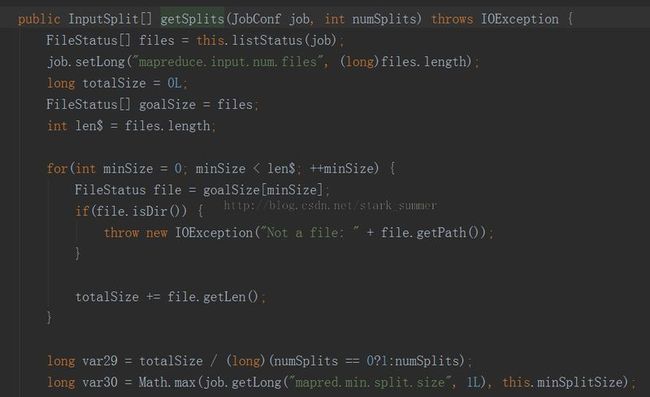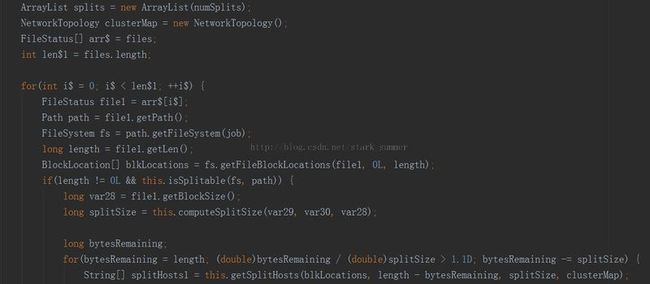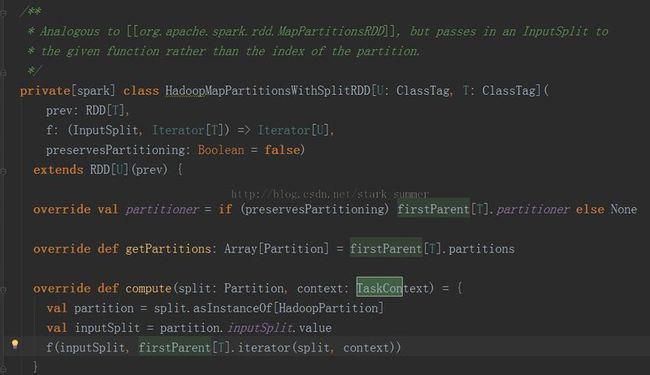- vue3计算属性computed
计算属性computedimport{computed}from"vue"//方式一//constcollapse=computed(()=>{//console.log('计算属性变化');//returnisCollapse//})//方式二constcollapse=computed({get:()=>{//返回订阅值returnisCollapse},set:(val)=>{//这里可以对
- 深入浅出:CUDA是什么,如何利用它进行高效并行计算
码上飞扬
CUDA
在当今这个数据驱动的时代,计算能力的需求日益增加,特别是在深度学习、科学计算和图像处理等领域。为了满足这些需求,NVIDIA推出了CUDA(ComputeUnifiedDeviceArchitecture),这是一种并行计算平台和编程模型。本文将带你全面了解CUDA的基本概念、工作原理及其应用场景。一、什么是CUDA?CUDA(ComputeUnifiedDeviceArchitecture)是由
- 阿里云 MaxCompute MaxQA 开启公测,解锁近实时高效查询体验
阿里云大数据AI技术
阿里云云原生MaxCompute大数据实时数仓
随着实时、近实时数据分析需求的持续增长,查询响应时间在现代数据分析和业务应用中变得越来越重要。为减少查询响应时间,提升数据效率,阿里云云原生大数据计算服务MaxCompute推出MaxQA(原MCQA2.0)查询加速功能,在独享的查询加速资源池的基础上,对管控链路、查询优化器、执行引擎、存储引擎以及缓存机制等多个环节进行全面优化,显著减少了查询响应时间,适用于BI场景、交互式分析以及近实时数仓等对
- LabVIEW利用CANopen的Batch SDO写入
LabVIEW开发
CanOpenLabVIEW知识CANOPENlabview
本示例展示了如何通过CANopen协议向设备写入BatchSDO(批量服务数据对象)。BatchSDO允许用户在一次操作中配置多个参数,适用于设备的批量配置和参数设置。此方法能够简化多个参数的写入过程,提高设备管理效率。主要步骤:创建新的BatchSDO:在NICANopenforPXIPCI项目中,右键点击MyComputer或RTTarget,从快捷菜单中选择NewCANopenBatchSD
- Operating System Concepts 9th Chapter 1 - Introduction
YOUNGBC
操作系统
Introduction目录Introduction1.WhatOperatingSystemsDo2.Computer-SystemOrganization2.1StorageStructure2.2I/OStructure3.Computer-SystemArchitectur3.1Single-ProcessorSystems3.2MultiprocessorSystems3.3Cluste
- 《Operating System Concepts》阅读笔记:p2-p8
codists
读书笔记systempython
《OperatingSystemConcepts》学习第2天,p2-p8总结,总计7页。一、技术总结1.operatingsystemAnoperatingsystemissoftwarethatmanagesacomputer’shardware。2.systembusdatabus,addressbus,controlbus统称为systembus。二、英语总结(生词:5)1.myriad(1
- Pytorch实现论文:利用推土机距离与梯度惩罚在ACGAN中训练。
这张生成的图像能检测吗
优质GAN模型训练自己的数据集pytorch人工智能深度学习gan机器学习生成对抗网络
论文简介论文:ACWGAN-GPformillingtoolbreakagemonitoringwithimbalanceddata(ACWGAN-GP用于铣削工具断裂监视的数据不平衡数据)出处:RoboticsandComputer-IntegratedManufacturing论文摘要:铣削操作过程中的刀具破损监测(TBM)对于确保工件质量和最大限度减少经济损失至关重要。在训练数据充足、分布均
- vue高级面试题
阿芯爱编程
js技巧面试vue.jsjavascript前端
以下是一些Vue高级面试题:一、Vue组件相关Vue组件通信有哪些方式?答案:Props和Events:父组件通过props向子组件传递数据,子组件通过$emit触发事件向父组件发送消息。Vuex(状态管理库):适用于复杂应用中跨组件的状态共享。组件可以从store中获取状态(使用computed属性),也可以通过mutations或actions修改状态。Provide/Inject:这是一种在
- Hyperparameter Tuning 原理与代码实战案例讲解
AGI大模型与大数据研究院
DeepSeekR1&大数据AI人工智能计算科学神经计算深度学习神经网络大数据人工智能大型语言模型AIAGILLMJavaPython架构设计AgentRPA
HyperparameterTuning原理与代码实战案例讲解作者:禅与计算机程序设计艺术/ZenandtheArtofComputerProgramming关键词:超参数调优,模型选择,性能提升,代码实战1.背景介绍1.1问题的由来在机器学习中,模型的选择和调优是至关重要的。模型选择涉及选择合适的算法和架构,而调优则集中在优化模型参数以提升性能。然而,模型参数众多,且每个参数的取值范围可能很广,
- AWS Solutions Architect Associate 备考大纲
apa45866
数据库
脑子一热决定学个AWS的证书。以下是Lynda.com的培训课程给出的学习大纲,我参考了一下别的学习资料,感觉靠谱,于是整理出来贴在这里。太长不看版:AWS最主要的4个服务类别是Storage,Compute,Database和Network。其中Storage和Compute的各项服务是SolutionsArchitect考试的重中之重。EC2和IAM估计是考的最多的。下面给出各个服务类别的考试
- 通用评估系统(五)- 前端部分总体说明
一个水货程序员
项目实战前端fastapipythonvue
通用评估系统(五)-前端部分总体说明相关链接Gitee地址通用评估系统(一)-介绍通用评估系统(二)-原型设计通用评估系统(三)-前端部分通用评估系统(四)-前端部分计算脚本编辑组件文档说明本节中说明前端总体显示相关信息。具体数据交互待后端开发时同步进行。目录结构实际显示效果全局搜索评估模型管理数据模型管理指标体系管理评估任务管理部分代码说明评估模型管理组件import{ref,h,compute
- AIGC从入门到实战:揭秘 Midjourney 的提示词写作技巧
AI架构设计之禅
DeepSeekR1&大数据AI人工智能Python入门实战计算科学神经计算深度学习神经网络大数据人工智能大型语言模型AIAGILLMJavaPython架构设计AgentRPA
AIGC从入门到实战:揭秘Midjourney的提示词写作技巧作者:禅与计算机程序设计艺术/ZenandtheArtofComputerProgramming1.背景介绍1.1问题的由来随着人工智能技术的飞速发展,人工智能生成内容(AIGC)逐渐成为可能。AIGC指的是利用人工智能技术自动生成文本、图像、音乐等内容。在AIGC领域,Midjourney是一个备受关注的技术,它能够根据用户输入的提示
- OpenCV 简介
奇点创客
OpenCV
OpenCV(OpenSourceComputerVisionLibrary,开源计算机视觉库:http://opencv.org)是一个开放源代码库,其中包含数百种计算机视觉算法。本文档介绍所谓的OpenCV2.xAPI,与基于C的OpenCV1.xAPI相比,该API本质上是一套C++API(自OpenCV2.4发行以来,不推荐再使用CAPI,并且不使用“C”编译器进行测试)。OpenCV具有
- Modelling & Downstream Applications
后端
ComputerAidedEngineering(MEC524)Assignment:3DModelling&DownstreamApplicationsYouarerequiredtomodelanassemblyusingSolidEdgesoftware.Thesuitabilityoftheassemblyselectedmustberatifiedbythetutorbeforeyouc
- Google Cloud技术学习总结
谭俊杰Jerry
人工智能
GoogleCloudPlatform(GCP)是由Google提供的一套云计算服务,帮助企业和开发者利用Google的基础设施来构建、部署和扩展应用程序。GCP提供了广泛的服务,涵盖计算、存储、数据分析、机器学习和网络等领域。以下是GoogleCloud的技术总结:核心服务计算服务GoogleComputeEngine:提供虚拟机(VM)实例,支持自定义配置,适合各种工作负载。GoogleKub
- 深入浅出了解HBase及RDD编程
山海王子
大数据hbase
深入浅出了解HBaseHBase简介架构HBase是什么样的数据库?关键是数据模型关键要素:什么是单元格时间戳的功能是什么?HBase为什么能存储海量数据创建一个HBase表配置Spark编写程序读取HBase数据编写程序向HBase写入数据关于搭建HBase高可用集群的图文教程,可参考我的另一篇博文——安装并配置HBase集群(5个节点)。HBase简介HBase是GoogleBigTable的
- 计算机视觉如何快速入门?
Frunze软件开发
日常问题回答开发语言计算机视觉工业异常检测论文
目录1.明确研究方向2.学习基础知识3.掌握核心算法4.实践项目5.阅读文献6.复现经典论文7.改进与创新总结计算机视觉(ComputerVision)是一个复杂且广泛的领域,尤其是工业异常检测这种特定方向,需要结合理论知识和实践技能。以下是一些具体的、可操作的建议,也是个人实际路径的一个总结,希望可以帮助到你快速入门并完成一篇论文。1.明确研究方向-工业异常检测的核心是识别图像或视频中的异常区域
- Modelling & Downstream Applications
后端
ComputerAidedEngineering(MEC524)Assignment:3DModelling&DownstreamApplicationsYouarerequiredtomodelanassemblyusingSolidEdgesoftware.Thesuitabilityoftheassemblyselectedmustberatifiedbythetutorbeforeyouc
- 探索远程睡眠控制新境界:Sleep-On-LAN
史姿若Muriel
探索远程睡眠控制新境界:Sleep-On-LANsleep-on-lanMulti-platformprocessallowingtosleeponLANalinuxorwindowscomputer,throughwake-on-lan(reversed)magicpacketsorthroughHTTPRESTrequests.项目地址:https://gitcode.com/gh_mirro
- 用vue3写一个好看的wiki前端页面
云浩舟
前端vue.jsjavascript
以下是一个使用Vue3+ElementPlus实现的Wiki风格前端页面示例,包含现代设计、响应式布局和常用功能:TechWiki开发文档快速开始API参考部署指南数据分析数据规范可视化指南{{currentDoc.title}}草稿import{ref,reactive,computed}from'vue'import{marked}from'marked'importDOMPurifyfrom
- Vue2 与 Vue3 中 Computed 计算属性详解
阿贾克斯的黎明
前端vue.js前端javascript
目录Vue2与Vue3中Computed计算属性详解一、Vue2中的Computed计算属性1.简单写法2.get和set写法二、Vue3中的Computed计算属性1.简单写法2.get和set写法三、总结在Vue开发中,计算属性(computed)是一个非常重要的特性,它可以对数据进行二次计算,为我们的开发带来了很大的便利。本文将结合Vue2和Vue3的特点,深入探讨computed计算属性,
- Spark 性能优化(四):Cache
LevenBigData
spark性能调优spark性能优化大数据
在Spark中,缓存是一种将计算结果存储在内存中的方式,目的是加速后续操作。当你执行迭代算法或查询时,如果多次重复使用相同的数据集,缓存可以避免每次都重新计算相同的转换操作。通过缓存,Spark可以将数据存储在内存中,这样在后续的处理阶段就能更快地访问。1.Spark缓存的关键点:缓存基本概念:通过调用.cache()对DataFrame或RDD进行缓存。默认情况下,数据会存储在内存中(RAM),
- OpenCV及基本用法
m0_74823683
opencv人工智能计算机视觉
一.OpenCV介绍1.OpenCV的全称是OpenSourceComputerVisionLibrary,是一个开放源代码的计算机视觉库。OpenCV是最初由英特尔公司发起并开发,以BSD许可证授权发行,可以在商业和研究领域中免费使用,现在美国WillowGarage为OpenCV提供主要的支持。OpenCV可用于开发实时的图像处理、计算机视觉以及模式识别程序,目前在工业界以及科研领域广泛采用。
- MD5加密
计蒙不吃鱼
Android开发相关MD5MD5加密
简介:MD5的全称是Message-DigestAlgorithm5(信息-摘要算法),它是一种单向加密算法,可以将输入的信息加密转换为128位固定长度的散列值,用于检验数据传输过程中的完整性。在90年代初由MITLaboratoryforComputerScience和RSADataSecurityInc的RonaldL.Rivest开发出来,经MD2、MD3和MD4发展而来。出现的两种观点:1
- WPF: 把引用的dll移动到自定义路径
zlcntt
UI编程(C#)dll
需求:有A.exe和B.exe,都引用了C.dll,output路径都是W:\Debug.A和B都添加了对C的引用,正常情况下C会被复制到output里面。C这样子的dll很多,不想把它们和exe放在同一级的目录,移动到子目录,如W:\Debug\3rdDll办法:1.首先设置C.dll打开ProjectA的References,选中C.dll,右键Properties,CopyLocal设为Fa
- Spark 和 Flink
信徒_
sparkflink大数据
Spark和Flink都是目前流行的大数据处理引擎,但它们在架构设计、应用场景、性能和生态方面有较大区别。以下是详细对比:1.架构与核心概念方面ApacheSparkApacheFlink计算模型微批(Micro-Batch)为主,但支持结构化流(StructuredStreaming)原生流(TrueStreaming),基于事件驱动处理方式以RDD、DataFrame/Dataset作为核心抽
- spark-广播变量
哈哈哈哈q
+sparkhdfshadoop大数据spark
当本地数据极大的时候,可以使用广播变量,使得减少内存。本地集合对象和分布式集合对象(RDD)进行关联的时候,需要将本地集合对象广播变量。本地的数据传输到集群上,会发到每一个线程,每一个分区。每一个进程executor,有多个线程分区,进程内的线程数据共享因此,给每一个线程发送数据会导致数据占用,浪费资源。所有,出现了广播变量,使得只发送给进程代码使用:broadcast=sc.broadcast(
- 深度学习基础知识
namelijink
深度学习人工智能
cuda简介:CUDA(ComputeUnifiedDeviceArchitecture)是由NVIDIA开发的一种并行计算平台和应用程序编程接口(API)。它允许开发人员利用NVIDIA的GPU(图形处理器)来加速各种计算任务,包括科学计算、机器学习、深度学习、数据分析等。NVIDIA是一个全球领先的计算技术公司,专注于设计和制造高性能计算设备。除了生产强大的GPU,NVIDIA还提供与其GPU
- 医学影像中缩写如CR、DR、DX、CT医疗术语意义
wangnaisheng
DICOMdicom
医疗术语解释:DigitalRadiography(CR,DX):数字X线摄影Mammography(MG):乳房X射线照相术ComputedTomography(CT):计算机断层扫描MagneticResonance(MR):磁共振PositronEmissionTomographyPET-CT(PT):正电子发射计算机断层扫描PET-CTUltrasonography(US,IVUS):超声
- 基于深度学习YOLOv5的活体人脸检测系统(Python+PySide6界面+训练代码)
深度学习&目标检测实战项目
深度学习YOLOpython人工智能目标跟踪计算机视觉开发语言
一、前言随着人工智能技术的快速发展,计算机视觉(ComputerVision)已广泛应用于各种实际场景中,特别是在安全、金融、医疗等领域。人脸识别作为计算机视觉的一个重要应用,已经成为很多身份验证、安防监控、智能门禁等系统的核心技术。近年来,随着深度学习的突破,YOLO(YouOnlyLookOnce)系列算法因其高效、准确、实时的特点,广泛应用于物体检测任务。在实际的人脸识别应用中,活体人脸检测
- java责任链模式
3213213333332132
java责任链模式村民告县长
责任链模式,通常就是一个请求从最低级开始往上层层的请求,当在某一层满足条件时,请求将被处理,当请求到最高层仍未满足时,则请求不会被处理。
就是一个请求在这个链条的责任范围内,会被相应的处理,如果超出链条的责任范围外,请求不会被相应的处理。
下面代码模拟这样的效果:
创建一个政府抽象类,方便所有的具体政府部门继承它。
package 责任链模式;
/**
*
- linux、mysql、nginx、tomcat 性能参数优化
ronin47
一、linux 系统内核参数
/etc/sysctl.conf文件常用参数 net.core.netdev_max_backlog = 32768 #允许送到队列的数据包的最大数目
net.core.rmem_max = 8388608 #SOCKET读缓存区大小
net.core.wmem_max = 8388608 #SOCKET写缓存区大
- php命令行界面
dcj3sjt126com
PHPcli
常用选项
php -v
php -i PHP安装的有关信息
php -h 访问帮助文件
php -m 列出编译到当前PHP安装的所有模块
执行一段代码
php -r 'echo "hello, world!";'
php -r 'echo "Hello, World!\n";'
php -r '$ts = filemtime("
- Filter&Session
171815164
session
Filter
HttpServletRequest requ = (HttpServletRequest) req;
HttpSession session = requ.getSession();
if (session.getAttribute("admin") == null) {
PrintWriter out = res.ge
- 连接池与Spring,Hibernate结合
g21121
Hibernate
前几篇关于Java连接池的介绍都是基于Java应用的,而我们常用的场景是与Spring和ORM框架结合,下面就利用实例学习一下这方面的配置。
1.下载相关内容: &nb
- [简单]mybatis判断数字类型
53873039oycg
mybatis
昨天同事反馈mybatis保存不了int类型的属性,一直报错,错误信息如下:
Caused by: java.lang.NumberFormatException: For input string: "null"
at sun.mis
- 项目启动时或者启动后ava.lang.OutOfMemoryError: PermGen space
程序员是怎么炼成的
eclipsejvmtomcatcatalina.sheclipse.ini
在启动比较大的项目时,因为存在大量的jsp页面,所以在编译的时候会生成很多的.class文件,.class文件是都会被加载到jvm的方法区中,如果要加载的class文件很多,就会出现方法区溢出异常 java.lang.OutOfMemoryError: PermGen space.
解决办法是点击eclipse里的tomcat,在
- 我的crm小结
aijuans
crm
各种原因吧,crm今天才完了。主要是接触了几个新技术:
Struts2、poi、ibatis这几个都是以前的项目中用过的。
Jsf、tapestry是这次新接触的,都是界面层的框架,用起来也不难。思路和struts不太一样,传说比较简单方便。不过个人感觉还是struts用着顺手啊,当然springmvc也很顺手,不知道是因为习惯还是什么。jsf和tapestry应用的时候需要知道他们的标签、主
- spring里配置使用hibernate的二级缓存几步
antonyup_2006
javaspringHibernatexmlcache
.在spring的配置文件中 applicationContent.xml,hibernate部分加入
xml 代码
<prop key="hibernate.cache.provider_class">org.hibernate.cache.EhCacheProvider</prop>
<prop key="hi
- JAVA基础面试题
百合不是茶
抽象实现接口String类接口继承抽象类继承实体类自定义异常
/* * 栈(stack):主要保存基本类型(或者叫内置类型)(char、byte、short、 *int、long、 float、double、boolean)和对象的引用,数据可以共享,速度仅次于 * 寄存器(register),快于堆。堆(heap):用于存储对象。 */ &
- 让sqlmap文件 "继承" 起来
bijian1013
javaibatissqlmap
多个项目中使用ibatis , 和数据库表对应的 sqlmap文件(增删改查等基本语句),dao, pojo 都是由工具自动生成的, 现在将这些自动生成的文件放在一个单独的工程中,其它项目工程中通过jar包来引用 ,并通过"继承"为基础的sqlmap文件,dao,pojo 添加新的方法来满足项
- 精通Oracle10编程SQL(13)开发触发器
bijian1013
oracle数据库plsql
/*
*开发触发器
*/
--得到日期是周几
select to_char(sysdate+4,'DY','nls_date_language=AMERICAN') from dual;
select to_char(sysdate,'DY','nls_date_language=AMERICAN') from dual;
--建立BEFORE语句触发器
CREATE O
- 【EhCache三】EhCache查询
bit1129
ehcache
本文介绍EhCache查询缓存中数据,EhCache提供了类似Hibernate的查询API,可以按照给定的条件进行查询。
要对EhCache进行查询,需要在ehcache.xml中设定要查询的属性
数据准备
@Before
public void setUp() {
//加载EhCache配置文件
Inpu
- CXF框架入门实例
白糖_
springWeb框架webserviceservlet
CXF是apache旗下的开源框架,由Celtix + XFire这两门经典的框架合成,是一套非常流行的web service框架。
它提供了JAX-WS的全面支持,并且可以根据实际项目的需要,采用代码优先(Code First)或者 WSDL 优先(WSDL First)来轻松地实现 Web Services 的发布和使用,同时它能与spring进行完美结合。
在apache cxf官网提供
- angular.equals
boyitech
AngularJSAngularJS APIAnguarJS 中文APIangular.equals
angular.equals
描述:
比较两个值或者两个对象是不是 相等。还支持值的类型,正则表达式和数组的比较。 两个值或对象被认为是 相等的前提条件是以下的情况至少能满足一项:
两个值或者对象能通过=== (恒等) 的比较
两个值或者对象是同样类型,并且他们的属性都能通过angular
- java-腾讯暑期实习生-输入一个数组A[1,2,...n],求输入B,使得数组B中的第i个数字B[i]=A[0]*A[1]*...*A[i-1]*A[i+1]
bylijinnan
java
这道题的具体思路请参看 何海涛的微博:http://weibo.com/zhedahht
import java.math.BigInteger;
import java.util.Arrays;
public class CreateBFromATencent {
/**
* 题目:输入一个数组A[1,2,...n],求输入B,使得数组B中的第i个数字B[i]=A
- FastDFS 的安装和配置 修订版
Chen.H
linuxfastDFS分布式文件系统
FastDFS Home:http://code.google.com/p/fastdfs/
1. 安装
http://code.google.com/p/fastdfs/wiki/Setup http://hi.baidu.com/leolance/blog/item/3c273327978ae55f93580703.html
安装libevent (对libevent的版本要求为1.4.
- [强人工智能]拓扑扫描与自适应构造器
comsci
人工智能
当我们面对一个有限拓扑网络的时候,在对已知的拓扑结构进行分析之后,发现在连通点之后,还存在若干个子网络,且这些网络的结构是未知的,数据库中并未存在这些网络的拓扑结构数据....这个时候,我们该怎么办呢?
那么,现在我们必须设计新的模块和代码包来处理上面的问题
- oracle merge into的用法
daizj
oraclesqlmerget into
Oracle中merge into的使用
http://blog.csdn.net/yuzhic/article/details/1896878
http://blog.csdn.net/macle2010/article/details/5980965
该命令使用一条语句从一个或者多个数据源中完成对表的更新和插入数据. ORACLE 9i 中,使用此命令必须同时指定UPDATE 和INSE
- 不适合使用Hadoop的场景
datamachine
hadoop
转自:http://dev.yesky.com/296/35381296.shtml。
Hadoop通常被认定是能够帮助你解决所有问题的唯一方案。 当人们提到“大数据”或是“数据分析”等相关问题的时候,会听到脱口而出的回答:Hadoop! 实际上Hadoop被设计和建造出来,是用来解决一系列特定问题的。对某些问题来说,Hadoop至多算是一个不好的选择,对另一些问题来说,选择Ha
- YII findAll的用法
dcj3sjt126com
yii
看文档比较糊涂,其实挺简单的:
$predictions=Prediction::model()->findAll("uid=:uid",array(":uid"=>10));
第一个参数是选择条件:”uid=10″。其中:uid是一个占位符,在后面的array(“:uid”=>10)对齐进行了赋值;
更完善的查询需要
- vim 常用 NERDTree 快捷键
dcj3sjt126com
vim
下面给大家整理了一些vim NERDTree的常用快捷键了,这里几乎包括了所有的快捷键了,希望文章对各位会带来帮助。
切换工作台和目录
ctrl + w + h 光标 focus 左侧树形目录ctrl + w + l 光标 focus 右侧文件显示窗口ctrl + w + w 光标自动在左右侧窗口切换ctrl + w + r 移动当前窗口的布局位置
o 在已有窗口中打开文件、目录或书签,并跳
- Java把目录下的文件打印出来
蕃薯耀
列出目录下的文件文件夹下面的文件目录下的文件
Java把目录下的文件打印出来
>>>>>>>>>>>>>>>>>>>>>>>>>>>>>>>>>>>>>>>>
蕃薯耀 2015年7月11日 11:02:
- linux远程桌面----VNCServer与rdesktop
hanqunfeng
Desktop
windows远程桌面到linux,需要在linux上安装vncserver,并开启vnc服务,同时需要在windows下使用vnc-viewer访问Linux。vncserver同时支持linux远程桌面到linux。
linux远程桌面到windows,需要在linux上安装rdesktop,同时开启windows的远程桌面访问。
下面分别介绍,以windo
- guava中的join和split功能
jackyrong
java
guava库中,包含了很好的join和split的功能,例子如下:
1) 将LIST转换为使用字符串连接的字符串
List<String> names = Lists.newArrayList("John", "Jane", "Adam", "Tom");
- Web开发技术十年发展历程
lampcy
androidWeb浏览器html5
回顾web开发技术这十年发展历程:
Ajax
03年的时候我上六年级,那时候网吧刚在小县城的角落萌生。传奇,大话西游第一代网游一时风靡。我抱着试一试的心态给了网吧老板两块钱想申请个号玩玩,然后接下来的一个小时我一直在,注,册,账,号。
彼时网吧用的512k的带宽,注册的时候,填了一堆信息,提交,页面跳转,嘣,”您填写的信息有误,请重填”。然后跳转回注册页面,以此循环。我现在时常想,如果当时a
- 架构师之mima-----------------mina的非NIO控制IOBuffer(说得比较好)
nannan408
buffer
1.前言。
如题。
2.代码。
IoService
IoService是一个接口,有两种实现:IoAcceptor和IoConnector;其中IoAcceptor是针对Server端的实现,IoConnector是针对Client端的实现;IoService的职责包括:
1、监听器管理
2、IoHandler
3、IoSession
- ORA-00054:resource busy and acquire with NOWAIT specified
Everyday都不同
oraclesessionLock
[Oracle]
今天对一个数据量很大的表进行操作时,出现如题所示的异常。此时表明数据库的事务处于“忙”的状态,而且被lock了,所以必须先关闭占用的session。
step1,查看被lock的session:
select t2.username, t2.sid, t2.serial#, t2.logon_time
from v$locked_obj
- javascript学习笔记
tntxia
JavaScript
javascript里面有6种基本类型的值:number、string、boolean、object、function和undefined。number:就是数字值,包括整数、小数、NaN、正负无穷。string:字符串类型、单双引号引起来的内容。boolean:true、false object:表示所有的javascript对象,不用多说function:我们熟悉的方法,也就是
- Java enum的用法详解
xieke90
enum枚举
Java中枚举实现的分析:
示例:
public static enum SEVERITY{
INFO,WARN,ERROR
}
enum很像特殊的class,实际上enum声明定义的类型就是一个类。 而这些类都是类库中Enum类的子类 (java.l

























